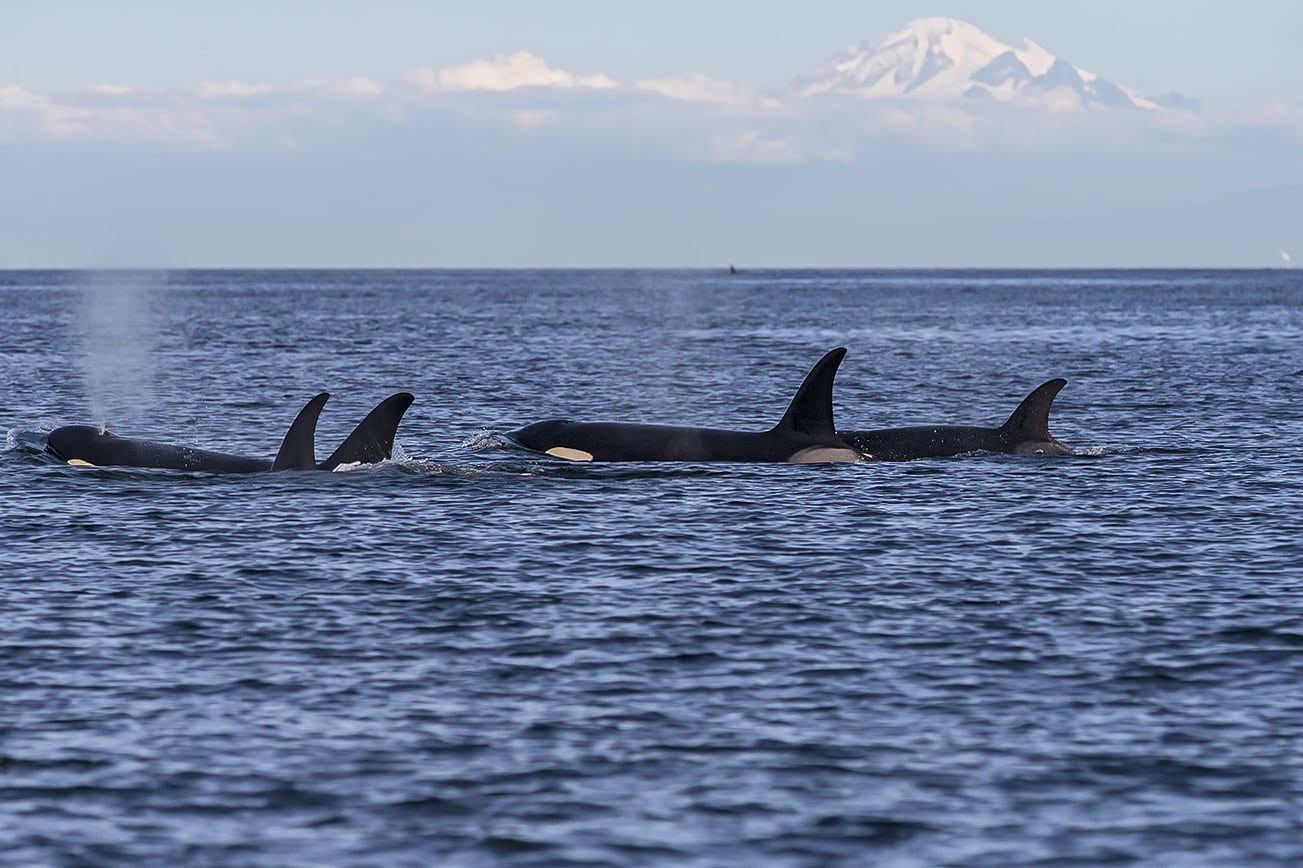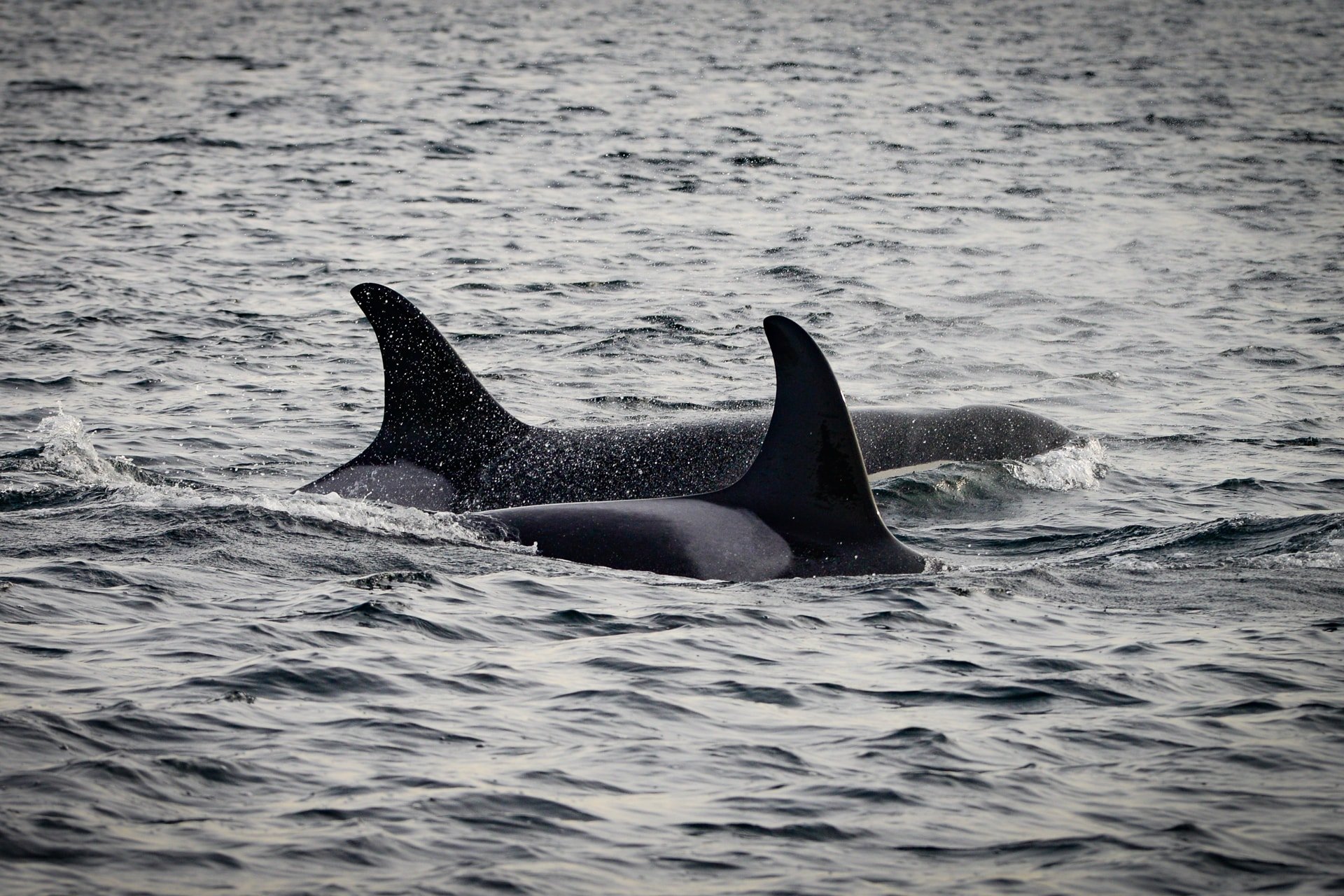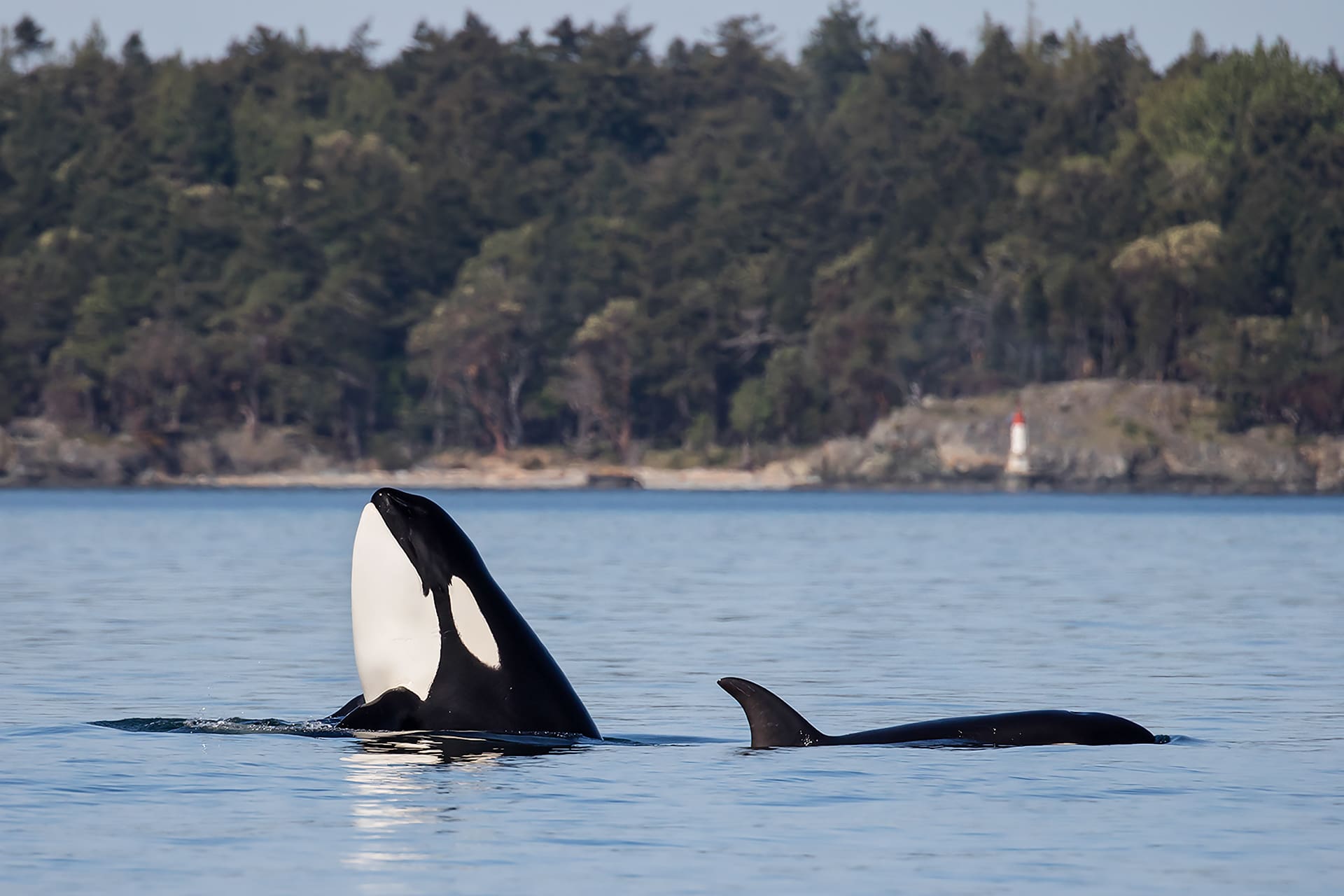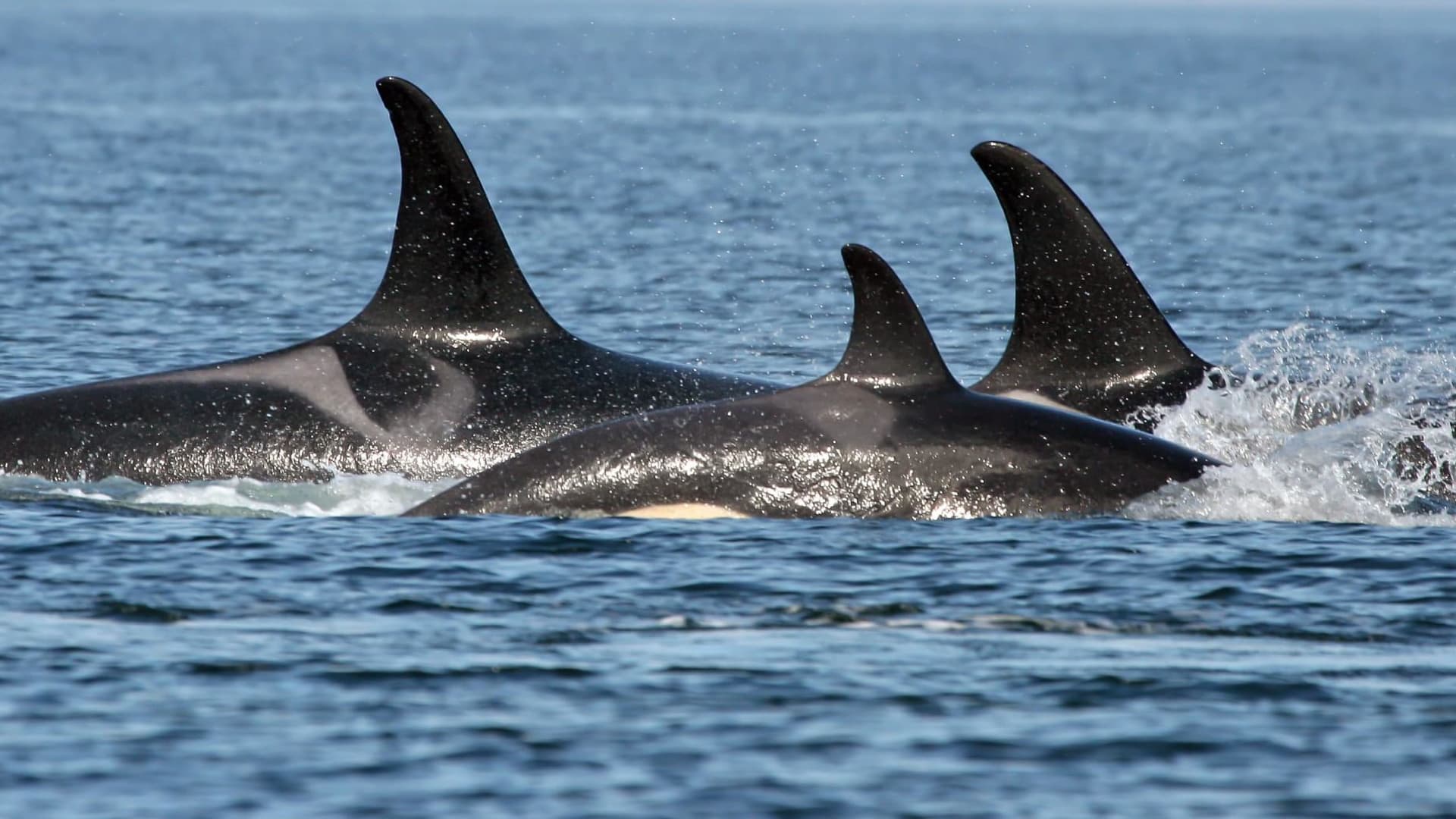
K 21 Cappuccino was last seen on July 28, struggling against the incoming tide in the Strait of Juan de Fuca, off the southern tip of Vancouver Island. He was severely emaciated, with a collapsed dorsal fin.
According to Wild Orca’s Science & Research Director, Dr. Giles, his condition was, “possibly the worst in which a living Southern Resident killer whale has ever been seen.” However, she noted that, “without fecal or breath samples collected in these final hours, or without his deceased body upon which to carry out a necropsy, we cannot say we know all the factors that led to his shocking condition, despite speculation to the contrary.”
She continues, “So, here’s what we can say: K21 was just 35 when he died, yet J1 Ruffles and L41 Mega are known to have collectively fathered 13 calves after their 35th birthdays.” In fact, J1’s last known calf was born the year he died, aged 59.
We know that Southern Resident females have lived to 80+, and males to 50+, so a recent study showing average lifespans are closer to 55 for females and 35 for males is very disturbing, and yet as J1 and 7 other males have shown, it is not only possible to live much longer, but these older males are also more likely to father calves.
As Dr. Giles notes, “these average lifespans are based on half a century of study, and this likely during some of the hardest salmon fishing years this community of killer whales has ever experienced. We don’t know what their lifespan was prior to industrial fishing, dams or deforestation, but some animals have shown us what their potential maximum age is. So we shouldn’t just say that dying aged 35 is normal, or just call this a natural ending of a long life. K21’s death was neither.”
K21 disappeared in a waterway historically transited by the Southern Residents following Chinook, heading “home” to spawn in Salish Sea rivers. This route was barely used by these killer whales in the summer of 2021—another record-setting year in progress, marked by their weekly absence, not daily presence. This “resident” foraging area, after which this population is named, is now a food desert—with Salish Sea Chinook on the brink of extinction due to human impacts.
“The persistent absence of predator and prey” explained Dr. Giles, “is a signal that the Salish Sea ecosystem is out of balance, and is unable to support predators at the top of the food chain. This should trigger alarm and action, not just an acceptance that these endangered killer whales must now look for food elsewhere.”
Unfortunately, eight populations of West Coast Chinook are on the Endangered Species list, with others set to follow. These killer whales rely on a diverse supply of Chinook from rivers from Alaska to California, and most populations of Chinook are struggling for survival. It’s no coincidence that the Southern Residents are also.
Over the last decade, there has been an unsustainable loss of important animals of prime breeding-age—like K21—in addition to the deaths of the next generation—youngsters under five years of age. When coupled with a known 69% miscarriage rate, and early death of newborns, both linked to malnutrition—as shown in Dr. Giles work with the University of Washington—this community struggles to survive when their deaths far outpace births.
Transient killer whales hunting marine mammals in these same waters are living on average 10 years longer than their salmon-dependent cousins, and their populations are increasing—their prey being abundant, rather than endangered.
“This shows” said Dr. Giles, “that if we made more Chinook available to these killer whales, they would likely be healthier and more resilient—less susceptible to disease, and the impacts from vessels—noise and disturbance—and toxicants both in the environment and their prey.”
Today the population totals just 74, with 6 known births, but 15 deaths in the last 5 years. Not all animals were seen in their final weeks or days, but six of them, like K21, showed signs of emaciation, including peanut-head, a condition that indicates malnutrition, often immediately prior to death.
It is imperative that the U.S. government commit to the reduction of Chinook salmon fishing, and allow more foraging opportunities for killer whales immediately. A comprehensive plan comparable to Canada’s newly launched Pacific Salmon Strategy Initiative is the only way forward to save Chinook salmon, killer whales, and a West Coast economy that relies on both.
Dr. Giles stresses, “we must not begin to normalize deaths, births, absence or presence of the endangered Southern Resident killer whales. By constantly shifting baselines this way, we are creating a new normal. The best way forward is to restore healthy ecosystems, shaped by healthy predators. This would be normal.”





